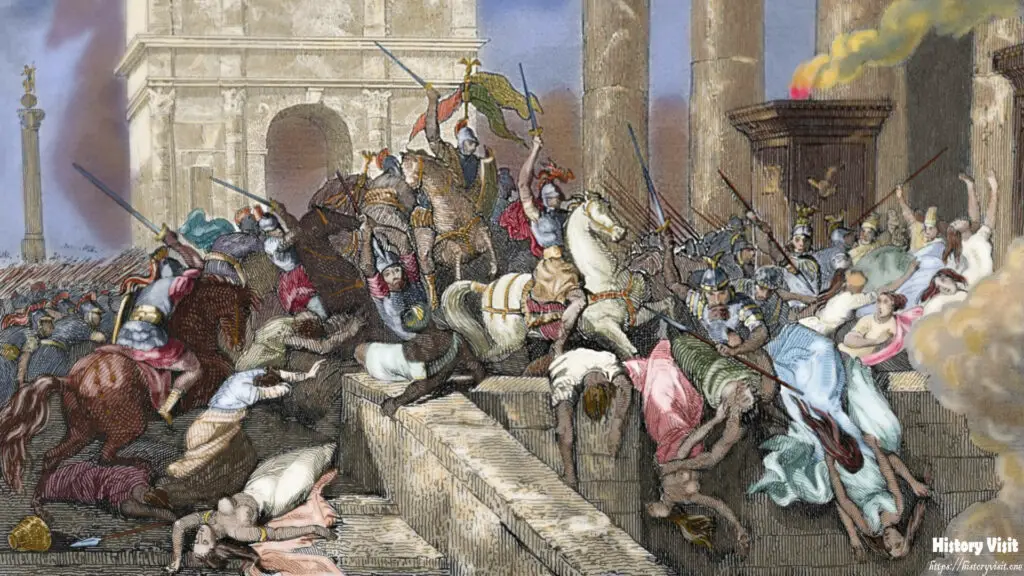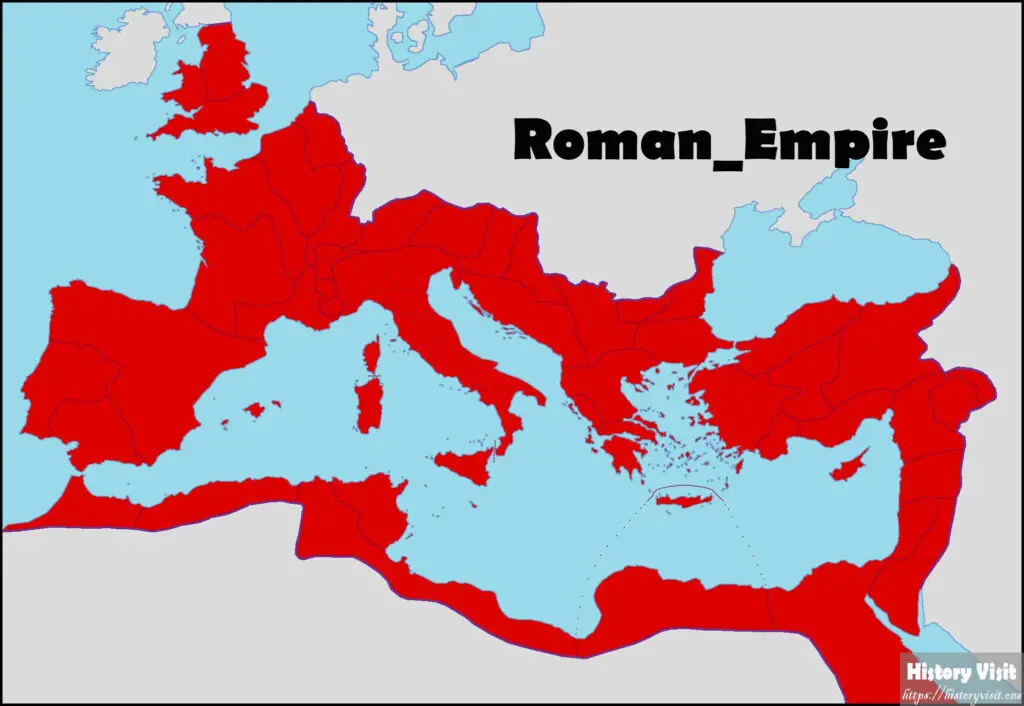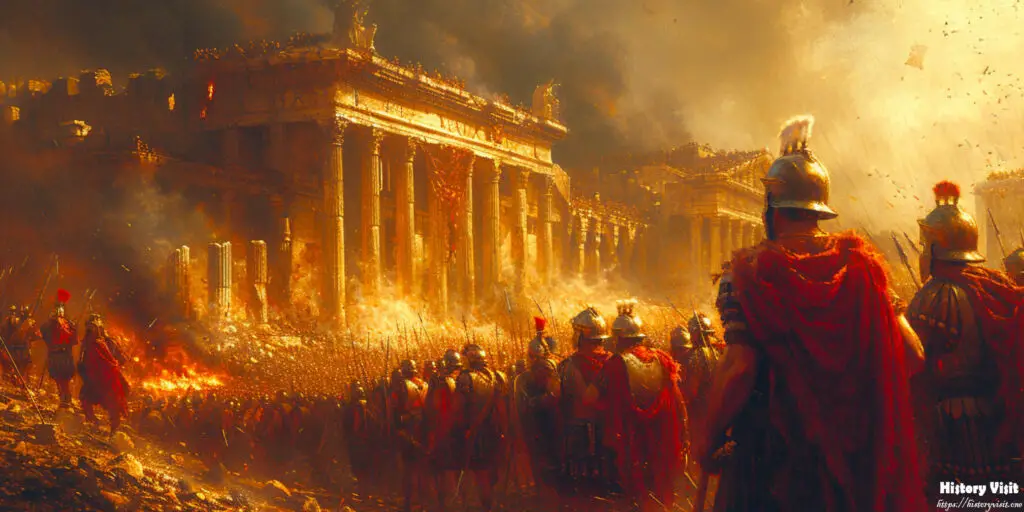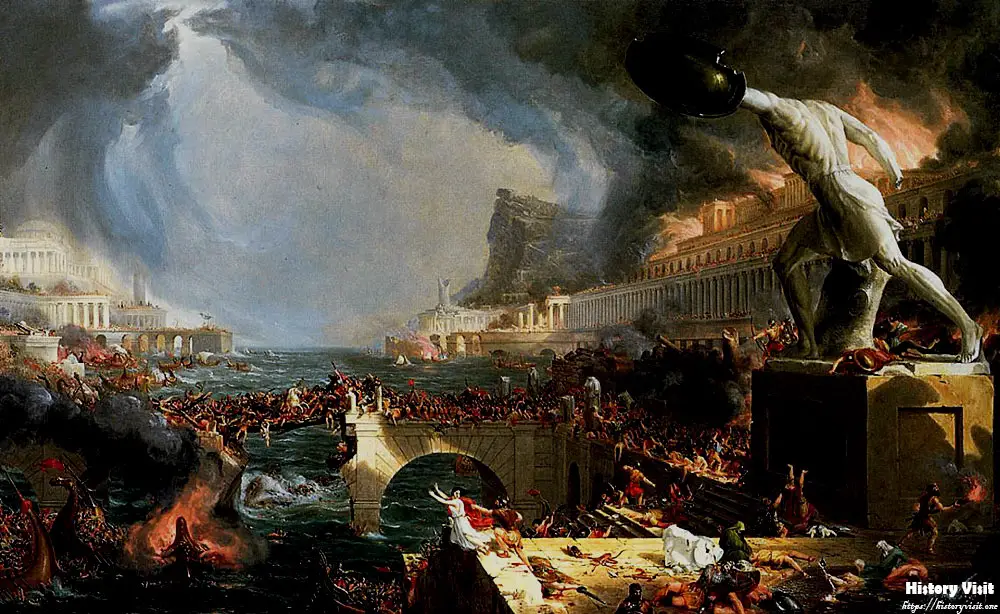Roman Empire: The Shocking Truth Behind Its Sudden Collapse!

Introduction
The Roman Empire, once a beacon of power and grandeur, is one of the most captivating stories in history. For centuries, this empire dominated vast territories, influencing countless aspects of modern civilization. However, despite its might and cultural influence, the Roman Empire eventually fell, leading to a series of transformative events that shaped the world as we know it today.
Understanding the fall of the Roman Empire requires delving into a multitude of factors. These include political corruption, economic troubles, military defeats, and the invasion by barbarian tribes. Each of these elements played a crucial role in the gradual decline and eventual collapse of this once-mighty empire.
In this article, we will explore the intricate details surrounding the fall of the Roman Empire. By examining the causes and consequences of its decline, we aim to uncover the secrets behind one of history’s most dramatic downfalls. Prepare to embark on a journey through time as we unravel the mysteries of the Roman Empire and its eventual demise.
Political Corruption and Instability

Political corruption was a significant factor in the decline of the Roman Empire. Over time, the government became increasingly corrupt, with officials seeking personal gain over the public good. This erosion of trust in leadership weakened the empire’s stability and led to widespread dissatisfaction among the populace.
Furthermore, the constant power struggles and civil wars among ambitious leaders exacerbated the political instability. The assassination of emperors and frequent changes in leadership created an environment of uncertainty. Consequently, the government’s ability to maintain control and effectively manage the empire was severely compromised.
Additionally, the division of the Roman Empire into the Eastern and Western Roman Empires contributed to its downfall. The splitting of administrative responsibilities created inefficiencies and made it difficult to coordinate efforts to defend against external threats. The Western Roman Empire, in particular, suffered from weak leadership and internal strife, hastening its decline.
Economic Troubles and Inflation
The economic troubles that plagued the Roman Empire were another critical factor leading to its fall. One of the primary issues was the heavy taxation imposed on the citizens. The burden of taxes became unbearable, leading to widespread discontent and rebellion among the people. This economic strain weakened the empire’s ability to sustain its military and infrastructure.
Inflation was another significant economic problem. As the empire expanded, the demand for money increased, leading to the devaluation of currency. The Roman Empire began to produce coins with less silver content, causing inflation to spiral out of control. This devaluation reduced the purchasing power of the currency, making it difficult for citizens to afford basic necessities.
Moreover, the reliance on slave labor contributed to the economic decline. The Roman Empire depended heavily on slaves for agricultural and industrial work. As the empire’s expansion slowed and fewer slaves were captured, the labor force dwindled. This labor shortage led to a decline in agricultural production and a decrease in economic productivity, further weakening the empire’s economic foundation.
Military Defeats and External Threats
The Roman Empire faced numerous military defeats and external threats that significantly contributed to its fall. One of the most notable defeats was the Battle of Adrianople in 378 AD, where the Roman army suffered a devastating loss to the Visigoths. This battle marked the beginning of the end for the Western Roman Empire, as it exposed the vulnerability of the Roman military.
The Huns, under the leadership of Attila, posed another significant threat to the Roman Empire. Their invasions and attacks weakened the empire’s defenses and strained its resources. The Huns’ relentless assaults forced the Romans to divert attention and resources away from other critical areas, further destabilizing the empire.
Barbarian invasions, particularly by the Germanic tribes, played a crucial role in the fall of the Roman Empire. The sack of Rome by the Visigoths in 410 AD and the Vandals in 455 AD were significant blows to the empire’s prestige and power. These invasions disrupted trade, destroyed infrastructure, and created a sense of insecurity among the populace, contributing to the empire’s decline.
Social and Cultural Decay

Social and cultural decay also played a significant role in the decline of the Roman Empire. The moral decay and loss of civic virtue among the Roman citizens weakened the social fabric of the empire. People became more focused on personal pleasures and luxuries rather than contributing to the common good, leading to a decline in societal cohesion.
The spread of Christianity also had a profound impact on the Roman Empire. While Christianity eventually became the state religion, its rise led to a shift in values and priorities. The focus on spiritual matters often came at the expense of civic responsibilities, contributing to the decline of traditional Roman values and weakening the empire’s social structure.
Furthermore, the division between the rich and the poor became more pronounced, leading to social unrest. The vast wealth disparity created a sense of injustice and dissatisfaction among the lower classes. This social tension, combined with the other factors, eroded the unity and stability of the Roman Empire.
Internal Strife and Civil Wars
Internal strife and civil wars were significant factors in the fall of the Roman Empire. The power struggles among ambitious leaders often resulted in bloody conflicts, weakening the empire from within. The constant fighting for control over the throne created a state of perpetual instability and chaos.
One of the most notable periods of internal strife was the Crisis of the Third Century. During this time, the Roman Empire was plagued by a series of short-lived emperors, usurpers, and civil wars. The frequent changes in leadership and the lack of a stable government made it difficult to address the empire’s external threats effectively.
Moreover, the division of the empire into the Eastern and Western Roman Empires exacerbated the internal strife. The two halves often had conflicting interests and priorities, leading to further discord. The inability to present a united front weakened the empire’s ability to defend itself against external attacks and maintain internal order.
Environmental and Public Health Issues
Environmental and public health issues also contributed to the decline of the Roman Empire. The empire faced numerous environmental challenges, such as deforestation, soil depletion, and climate change. These environmental problems led to a decline in agricultural productivity, causing food shortages and economic instability.
Public health issues, including plagues and epidemics, also took a toll on the Roman Empire. The Antonine Plague, which struck in 165 AD, and the Plague of Cyprian, which occurred in the 3rd century, were particularly devastating. These outbreaks of disease killed a significant portion of the population, weakening the empire’s workforce and military.
Additionally, the poor living conditions in Roman cities contributed to the spread of disease. Overcrowding, inadequate sanitation, and the lack of clean water made cities breeding grounds for illness. The frequent outbreaks of disease further strained the empire’s resources and weakened its ability to respond to external threats.
The Role of Christianity
Christianity played a complex role in the fall of the Roman Empire. As the new religion spread, it brought significant changes to Roman society and its traditional values. Initially, Christians were persecuted for their beliefs, but over time, Christianity gained acceptance and eventually became the state religion under Emperor Constantine.
The rise of Christianity shifted the focus of Roman citizens from civic duties to spiritual matters. This shift in priorities often led to a decline in public service and a weakening of the traditional Roman virtues that had once held the empire together. The church also became a powerful institution, sometimes rivaling the authority of the state.
Furthermore, the Christian emphasis on pacifism and the rejection of traditional Roman military values may have weakened the empire’s ability to defend itself. As more people converted to Christianity, the willingness to serve in the military diminished. This decline in military participation contributed to the empire’s vulnerability to external attacks.
Consequences of the Fall

The fall of the Roman Empire had profound and far-reaching consequences. The immediate aftermath of the collapse saw the fragmentation of the Western Roman Empire into various barbarian kingdoms. This period, often referred to as the Dark Ages, was marked by political instability, economic decline, and cultural regression.
However, the fall of the Roman Empire also set the stage for the eventual rise of new civilizations and the spread of new ideas. The remnants of the Roman Empire influenced the development of medieval Europe, shaping its political, social, and cultural landscape. The legacy of Roman law, architecture, and engineering continued to impact future generations.
Additionally, the fall of the Roman Empire paved the way for the rise of the Byzantine Empire in the East. The Byzantine Empire preserved much of the Roman heritage and became a center of culture, learning, and commerce for centuries. The fall of the Western Roman Empire marked the end of one era but also the beginning of a new and transformative period in history.
Conclusion
The fall of the Roman Empire is a testament to the complexity and fragility of human civilizations. Political corruption, economic troubles, military defeats, social decay, and environmental challenges all played a role in the empire’s decline. The rise of Christianity and internal strife further weakened the once-mighty empire, leading to its eventual collapse.
Despite the fall, the legacy of the Roman Empire continues to influence the modern world. Its contributions to law, architecture, engineering, and culture have left an indelible mark on history. The story of the Roman Empire serves as a reminder of the importance of strong leadership, social cohesion, and adaptability in the face of changing circumstances.
In exploring the causes and consequences of the fall of the Roman Empire, we gain valuable insights into the dynamics of historical change. By understanding the factors that led to its decline, we can better appreciate the complexities of human societies and the lessons they offer for our own time. The Roman Empire may have fallen, but its story remains an enduring and instructive chapter in the history of civilization.


